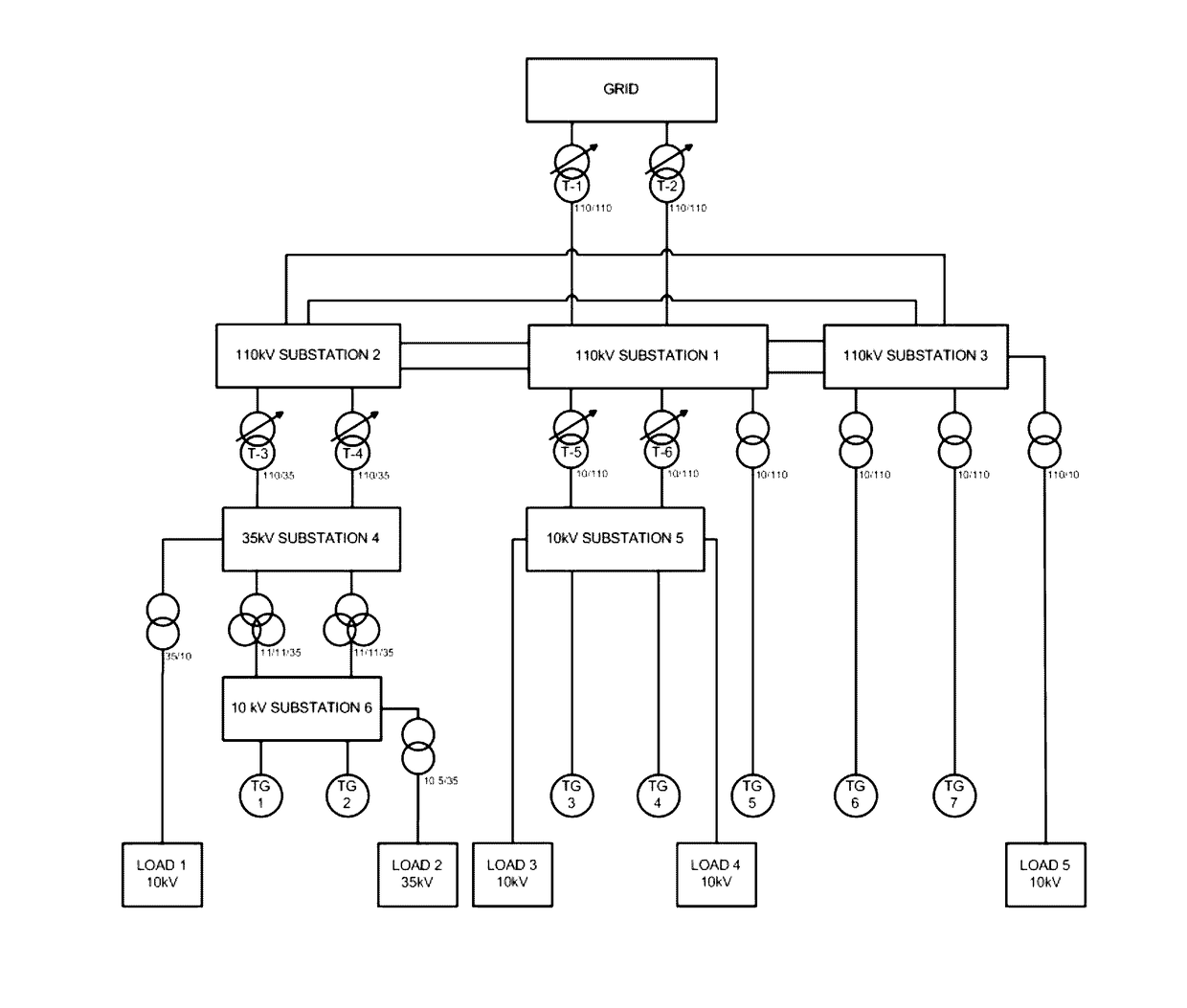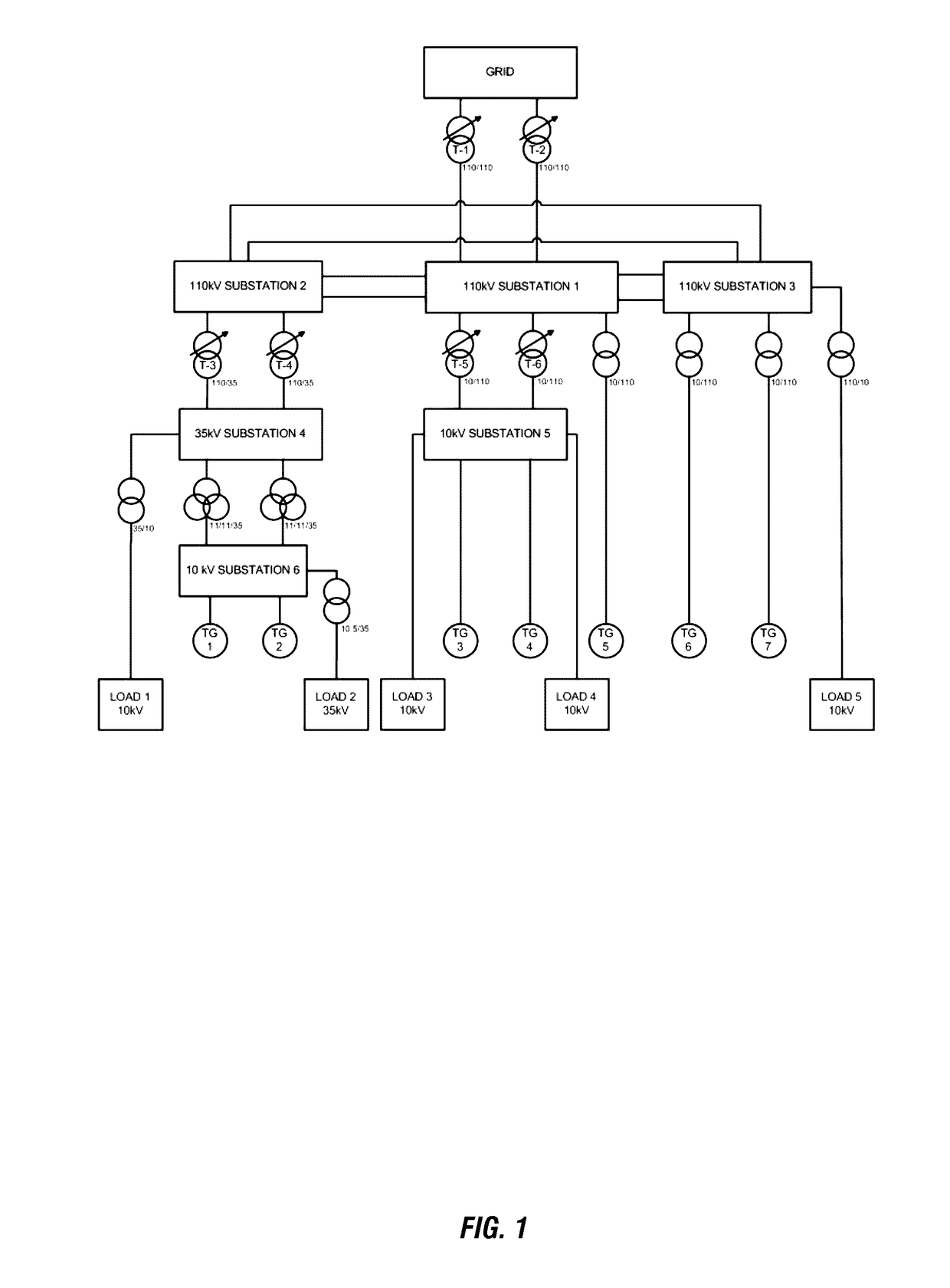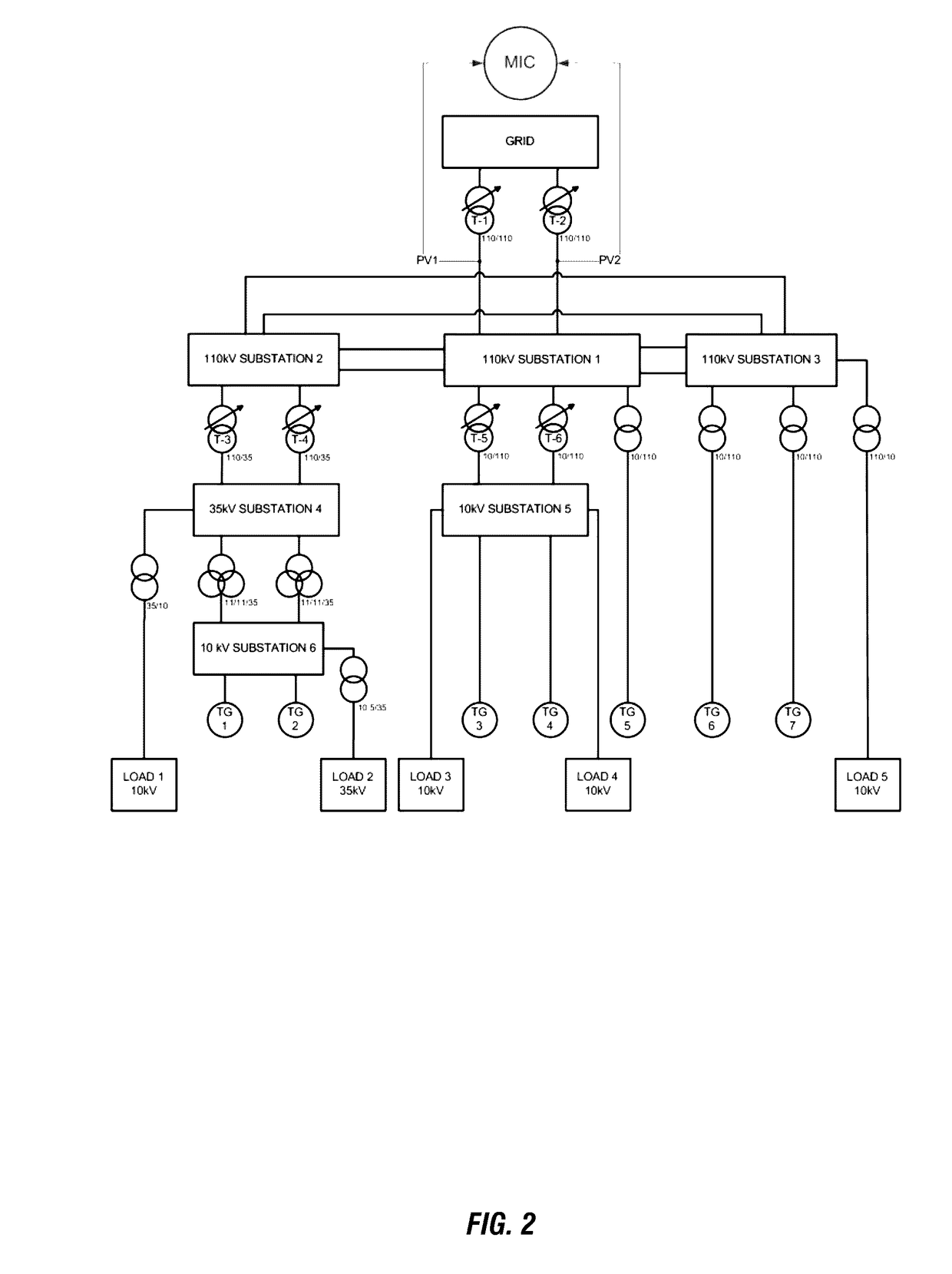Method and apparatus for voltage control in electric power systems
a voltage control and electric power system technology, applied in the direction of electric controllers, controllers with particular characteristics, contiguous ac circuit arrangements, etc., can solve the problem of counteracting algorithmically potentially destabilizing interactions between high and low level control modules, and minimize interaction between high voltage buses. the effect of counteracting potentially destabilizing interactions
- Summary
- Abstract
- Description
- Claims
- Application Information
AI Technical Summary
Benefits of technology
Problems solved by technology
Method used
Image
Examples
Embodiment Construction
[0029]Details of the disclosed invention are illustrated on a specific example of a simplified power distribution system shown in FIG. 1, however, results and value of the invention is generalizable to any power distribution system with at least two substations and at least one load. The system shown in FIG. 1 has five sources of electrical power:[0030]1. Two transformers (T-1 and T-2) connecting the 110 kV switchyard to the grid.[0031]2. Two turbo generators (TG1 and TG2) in substation 6 connected at 11 kV.[0032]3. Two turbo generators (TG3 and TG4) in substation 5 connected at 10 kV.[0033]4. One turbo generator (TG5) in substation 1 connected at 110 kV.[0034]5. Two turbo generators (TG6 and TG7) in substation 3 connected at 110 kV.
[0035]The main system transformers (T-1 through T-6) are used in voltage control operations and are equipped with On Load Tap Changers (OLTC). Each transformer's index indicates the to / from voltage transformation. For example, transformer T-3 index is 11...
PUM
 Login to view more
Login to view more Abstract
Description
Claims
Application Information
 Login to view more
Login to view more - R&D Engineer
- R&D Manager
- IP Professional
- Industry Leading Data Capabilities
- Powerful AI technology
- Patent DNA Extraction
Browse by: Latest US Patents, China's latest patents, Technical Efficacy Thesaurus, Application Domain, Technology Topic.
© 2024 PatSnap. All rights reserved.Legal|Privacy policy|Modern Slavery Act Transparency Statement|Sitemap



